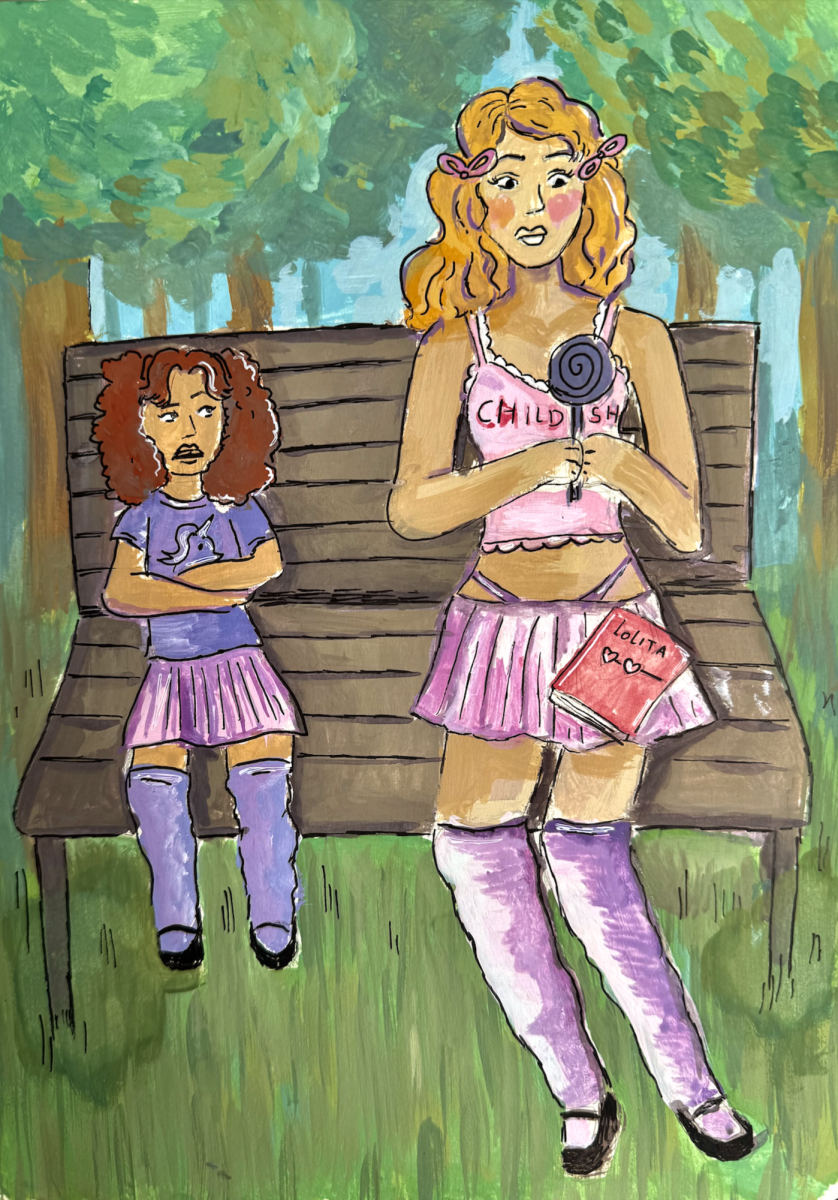To outsiders, JIS may be known for our blue and silver school colors or our infamous dragon mascot. However, one integral concept of our school differentiates us largely from any other international school, namely, Hut culture.
The idea of huts at JIS may seem peculiar at first glance. After all, a hut is typically associated with providing shelter. This may be true because it protects us students from the scorching Jakarta heat or shields us during tor rential rainy days. However, these huts serve as more than just physical cover. The huts symbolize a unique structure that unites and divides the student population.
Anatomy of the Huts
By now, you most likely know of the huts. But if you don’t, here is a break down of the hut demographic to help demystify this unspoken system. The nine huts across campus house various groups and cliques, typically exclusive to a singular year group.
Aside from one hut that deviates from precedent by housing a mix of junior and senior residents, if you feel the huts are a bit too exclusive or ter ritorial, fear not; there are also plenty of other places perfect for those who would rather stay out of the hut hustle.
These sub-communities, such as the campus benches, picnic tables, and other seating areas, serve as a space for students to connect with friends from different grades. While these areas foster inter-grade mingling, the huts remain a central and defining aspect of JIS high school life as they shape a larger sense of community within a grade.
Looking Back
To fully understand the social landscape of Hut culture, it is essential to trace it to its roots and examine how it has evolved. The history of the hut system stretches back to the schools conception, spanning an impressive 73 years. Over the decades, the huts have evolved with each incoming class, changing both their names and policies. For example, in the 1980s, a smoking

hut allowed students, with parental permission, to smoke on school grounds. While these huts are thank fully no longer in existence, more recent huts such as the senior “Bali Hut,” or the sophomore “Quirky Hut,” are a testament to the ongoing evolution of Hut culture within our school community.
However, there may be a larger question remaining: whether the distinguishing concept between separation was comfort and commonality rather than conformity.
Since the 2000s, certain huts have been divided by ethnicity, such as a Chinese-Indonesian Hut, a Dutch Hut, and possibly a Korean Hut. While there has been a shift away in recent years, many may find the concept of this largely discriminatory.
However, it is evident from walking about the campus that no hut is exclu sive to one culture anymore; it is not a necessary qualification in determining hut membership. The diversity and inclusivity of the huts on campus reflect the clear change toward a more unified and accepting school community.
Mr Burke, Associate Principal of Student Life and Well-being, noted, “When we still had students coming on campus [during COVID-19], all of the grade division went away, and people were just mixing in the huts.”
However, as campus life resumed in full, “people went back to grade level huts.” This shift reflects an inherent human tendency to gravitate toward familiar groups—a tendency Mr. Burke views as natural and not entirely negative.
Navigating No Man’s Land
Despite efforts to foster a more inclusive and diverse Hut culture, significant challenges persist in bal ancing tradition with maintaining the unique identity of each hut.
Survey responses reveal troubling reports of aggressive, territorial be haviour within these spaces: students allegedly wielding DIY flame throw ers, slipping dry ice into unsuspecting water bottles, and engaging in heated physical conflicts. This behaviour transforms a perception of the huts— more reminiscent of a zoo than a school common space.
High school psychology teacher Mr. Fox labeled these behaviours as manifestations of the inherent tribal tendencies of adolescents, highlight
ing that group formation around geographic or sociocultural factors is inevitable. Yet, he questioned, “whether or not we were helping or hurting by formalizing [Hut culture].” By institutionalizing these spaces could we unintentionally be reinforcing exclusivity and rivalry?
The Us vs. Them Mentality
Unfortunately, this idea of an “us versus them” mentality is identified in the way students refer to the huts in their grades. Unlike the senior cohort, which often adopts specific and grade known names, the junior cohort has yet to settle on distinct identities for their spaces. Instead, some students refer to each space simply as “our hut” and “their hut,”—phrases that quietly draws lines within the grade. By using “our” and “their” rather than a shared or unique name, students
 create a mental divide that reinforces a sense of group loyalty—one that is both inclusive and exclusive. It is human nature to find belonging through distinctions, after all. Saying “our” fosters a sense of closeness and ownership, while “their” hints at a boundary that keeps others at arms length. While this distinction may seem ingly be harmless, it forms a subtle barrier that socially defines who is a part of each circle.
create a mental divide that reinforces a sense of group loyalty—one that is both inclusive and exclusive. It is human nature to find belonging through distinctions, after all. Saying “our” fosters a sense of closeness and ownership, while “their” hints at a boundary that keeps others at arms length. While this distinction may seem ingly be harmless, it forms a subtle barrier that socially defines who is a part of each circle.
This subtle tribalism is not without its quirks. Stories of students being gently discouraged or not-so-gently barred from entering a hut that was not “their” hut, come up occasionally, as if stepping foot in these imagi nary borders were taboo.
It all seems part of an unspoken rule: our hut is our territory, and exploring someplace else might as well require a escort. “Once a dragon, always a dragon,” but do we only come out of our caverns to breathe fire on each other?
A Place of Belonging
Nonetheless, instead of focusing on the negative aspects that outsiders tend to gravitate towards, Hut culture fosters a sense of belonging, and creates oppor
tunities for meaningful friendships, alongside building grade-level identities. For many students, these huts are seen as a safe space where they can rest, rejuvenate, and reconvene with peers whom they may not share classes with.
“[The huts are] fun to have a place you belong to as well as share with others and make new friends,” one student shared.
Another noted how their hut fostered spontaneous moments of joy: “I remember when we all did a karaoke thing together, singing songs by the Backstreet Boys and other notable artists. It brought us all closer.”
Camaraderie in Connections
Beyond the day-to-day interactions, huts also offer opportunities for collaboration and bonding during key school events. During the Cilandak Games, where
students compete in friendly rivalry among year groups, one student described their hut as a hub of energy, with music playing and everyone cheering and laughing alongside collaborating as a unified team. This shared sense of purpose creates prominent memories that many carry beyond high school.
Another student reflected on how these spaces have helped to foster new connections within the grade: “Last year, the hut system was divided into two smaller huts, but now that we share one space, I’ve bonded more with others I was kind of scared of before.” 
Additionally, the school offers the opportunity for the huts to offer lessons of responsibility while provid ing a platform for students to unite in support of higher objectives. In previous years, when a hut appeared to be neglected, their hut would be sealed off. The only way to regain access to the hut was for all members to meet with Mr. Burke and acknowledge the actions that needed to be performed to better manage and maintain their shared space.
All of the students benefited greatly from this learn ing experience, helping the community to come together and learn further about responsibility and teamwork. This collaborative approach fosters a sense of unity and camaraderie among the student body.
Value of Simple Moments
Even small acts of kindness within our huts demon strate their positive impacts. One student recalled how a peer would “braid anyones hair, no matter how busy she was,” indicating a sense of warmth and openness within the group.
Students themselves have noted how huts serve as spaces for shared memories that go beyond individual differences. From long lunch conversations to shared camaraderie during school events, the huts provide a unique blend of tradition and connection.
One student even remarked, “Our hut is where we’ve celebrated birthdays, laughed over inside jokes, and even comforted each other on bad days. Its a space where we all feel seen and supported.”
Hut culture at JIS serves more than just a collection of physical structures, it is a reflection of the unique so cial dynamics that shape the overall high school experi ence. These spaces, while not without some challenges, serve as hotspots for connection, belonging, and shared memories. From fostering grade-level pride to creating
spaces where students can bond over shared moments, these huts embody both the strength and complexities of our diverse school community. As JIS as a commu nity continues to grow, the challenge lies in nurturing the inclusive and positive aspects of Hut culture while acknowledging and addressing the issues of exclusivity and division.




























